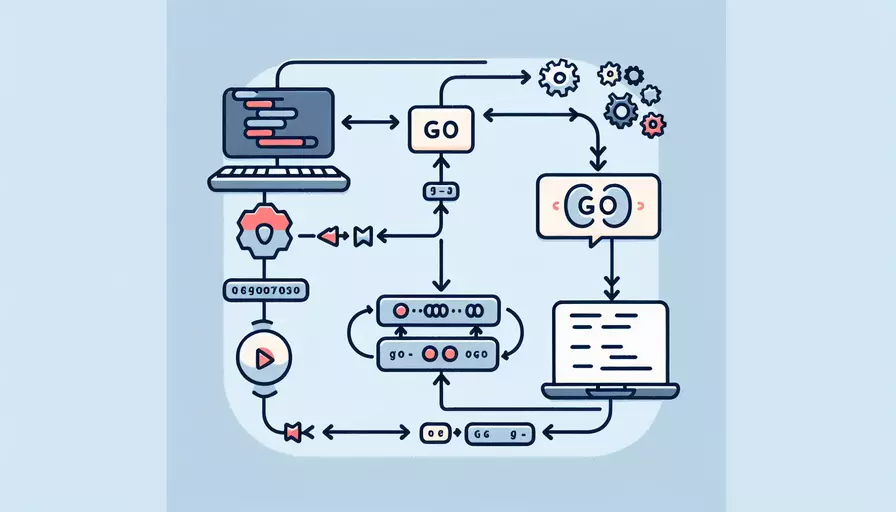
在Go语言中,发送字符串到前端的方式主要有以下几种:1、使用HTTP协议发送数据,2、使用WebSocket发送数据,3、通过模板引擎渲染页面。其中,使用HTTP协议发送数据是最常见且最基础的方法。下面将详细介绍如何使用HTTP协议在Go语言中发送字符串到前端。
一、使用HTTP协议发送数据
使用HTTP协议发送数据是最基础的方法,通过net/http包可以轻松实现。以下是具体步骤:
-
创建HTTP服务器:
package mainimport (
"fmt"
"net/http"
)
func main() {
http.HandleFunc("/", handler)
fmt.Println("Starting server at port 8080")
http.ListenAndServe(":8080", nil)
}
func handler(w http.ResponseWriter, r *http.Request) {
w.Header().Set("Content-Type", "text/plain")
w.Write([]byte("Hello, World!"))
}
这段代码创建了一个简单的HTTP服务器,当访问根路径时,服务器返回"Hello, World!"字符串。
-
运行服务器:
运行上述代码,服务器将在8080端口监听请求,访问
http://localhost:8080即可在浏览器中看到返回的字符串。
二、使用WebSocket发送数据
WebSocket是一种在单个TCP连接上进行全双工通信的协议,适用于需要实时通信的应用。以下是具体步骤:
-
安装WebSocket库:
go get github.com/gorilla/websocket -
创建WebSocket服务器:
package mainimport (
"fmt"
"net/http"
"github.com/gorilla/websocket"
)
var upgrader = websocket.Upgrader{
CheckOrigin: func(r *http.Request) bool {
return true
},
}
func main() {
http.HandleFunc("/ws", handler)
fmt.Println("Starting server at port 8080")
http.ListenAndServe(":8080", nil)
}
func handler(w http.ResponseWriter, r *http.Request) {
conn, err := upgrader.Upgrade(w, r, nil)
if err != nil {
fmt.Println(err)
return
}
defer conn.Close()
for {
_, message, err := conn.ReadMessage()
if err != nil {
fmt.Println(err)
break
}
fmt.Printf("Received: %s\n", message)
conn.WriteMessage(websocket.TextMessage, []byte("Hello from WebSocket server"))
}
}
这段代码创建了一个WebSocket服务器,当客户端连接时,服务器会返回"Hello from WebSocket server"字符串。
-
运行服务器:
运行上述代码,在前端使用JavaScript连接到WebSocket服务器并发送和接收消息。
三、通过模板引擎渲染页面
使用模板引擎可以在HTML中嵌入Go代码,动态生成内容并发送到前端。以下是具体步骤:
-
创建HTML模板文件(
template.html):<!DOCTYPE html><html lang="en">
<head>
<meta charset="UTF-8">
<meta name="viewport" content="width=device-width, initial-scale=1.0">
<title>Go Template</title>
</head>
<body>
<h1>{{.}}</h1>
</body>
</html>
-
创建Go服务器并渲染模板:
package mainimport (
"html/template"
"net/http"
"fmt"
)
func main() {
http.HandleFunc("/", handler)
fmt.Println("Starting server at port 8080")
http.ListenAndServe(":8080", nil)
}
func handler(w http.ResponseWriter, r *http.Request) {
tmpl, err := template.ParseFiles("template.html")
if err != nil {
http.Error(w, err.Error(), http.StatusInternalServerError)
return
}
tmpl.Execute(w, "Hello, Template!")
}
-
运行服务器:
运行上述代码,访问
http://localhost:8080即可在浏览器中看到通过模板引擎渲染的字符串。
总结与建议
总结以上三种方法:
- HTTP协议:适合简单、非实时的请求响应场景。
- WebSocket:适合实时通信的场景,如聊天室、实时数据更新等。
- 模板引擎:适合需要动态生成HTML页面的场景。
建议根据具体需求选择合适的方法。如果只是简单地发送字符串,可以使用HTTP协议;如果需要实时通信,建议使用WebSocket;如果需要动态生成HTML页面,可以使用模板引擎。无论选择哪种方法,都需要确保服务器的安全性和性能,避免潜在的安全漏洞和性能瓶颈。
相关问答FAQs:
1. 如何在Go语言中发送字符串到前端?
在Go语言中,我们可以使用net/http包来发送字符串到前端。下面是一个简单的示例代码:
package main
import (
"fmt"
"net/http"
)
func handler(w http.ResponseWriter, r *http.Request) {
fmt.Fprint(w, "Hello, World!") // 将字符串发送到前端
}
func main() {
http.HandleFunc("/", handler)
http.ListenAndServe(":8080", nil)
}
在上述代码中,我们定义了一个handler函数,该函数接收一个http.ResponseWriter和一个http.Request参数。使用fmt.Fprint函数,我们可以将字符串发送到http.ResponseWriter,从而发送到前端。
2. 如何在Go语言中发送带有HTML标签的字符串到前端?
如果你想要发送带有HTML标签的字符串到前端,可以使用html/template包来实现。下面是一个示例代码:
package main
import (
"html/template"
"net/http"
)
func handler(w http.ResponseWriter, r *http.Request) {
tmpl := template.Must(template.New("index.html").Parse(`
<!DOCTYPE html>
<html>
<head>
<title>My Page</title>
</head>
<body>
<h1>Hello, World!</h1>
</body>
</html>
`))
tmpl.Execute(w, nil) // 将HTML字符串发送到前端
}
func main() {
http.HandleFunc("/", handler)
http.ListenAndServe(":8080", nil)
}
在上述代码中,我们使用html/template包创建了一个HTML模板,其中包含了带有HTML标签的字符串。然后,使用tmpl.Execute方法将HTML字符串发送到http.ResponseWriter,从而发送到前端。
3. 如何在Go语言中发送JSON格式的字符串到前端?
如果你想要发送JSON格式的字符串到前端,可以使用encoding/json包来实现。下面是一个示例代码:
package main
import (
"encoding/json"
"net/http"
)
type Person struct {
Name string `json:"name"`
Age int `json:"age"`
Email string `json:"email"`
}
func handler(w http.ResponseWriter, r *http.Request) {
person := Person{
Name: "John Doe",
Age: 30,
Email: "johndoe@example.com",
}
jsonData, _ := json.Marshal(person) // 将结构体转换为JSON字符串
w.Header().Set("Content-Type", "application/json")
w.Write(jsonData) // 将JSON字符串发送到前端
}
func main() {
http.HandleFunc("/", handler)
http.ListenAndServe(":8080", nil)
}
在上述代码中,我们定义了一个Person结构体,其中包含了名称、年龄和电子邮件字段。使用json.Marshal函数,我们可以将Person结构体转换为JSON格式的字符串。然后,使用w.Write方法将JSON字符串发送到http.ResponseWriter,从而发送到前端。
文章标题:go语言怎么发送字符串到前端,发布者:飞飞,转载请注明出处:https://worktile.com/kb/p/3504452

 微信扫一扫
微信扫一扫  支付宝扫一扫
支付宝扫一扫 